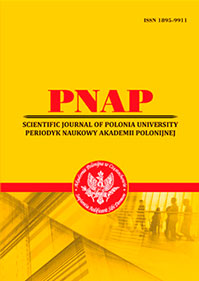HOMONYMY IN VERBAL WORD COMBINATIONS
Abstract
The article is aimed at investigating grammatical homonymy in the Modern English language, types and peculiarities of the homonymous structures functioning in the literary texts. Homonymy is analyzed as a phenomenon of synchrony and viewed as a result of opposite processes of semantic divergence of words, etymologically coming from one and the same source. Homonyms are linguistic units different in meaning but identical in their form. In case of polysemy, different meanings of the same grammatical form are mutually dependent and proceed from the same meaning. In case of homonymy, the primary (invariant) meaning of a given grammatical form is no longer traced in different uses of this form. Syntactical homonymy is more complicated in its general features than morphological homonymy: identity of homonymous structures is not of absolute, all-embracing character and along with the prevailing identity there are also some differences, which are explicit indicators of deep non-identity of syntactical constructions. Structural non-identity of syntactical homonyms reveals itself in the process of their formation. Syntactical homonyms are such units in which surface structures coincide but deep semantic structures are different. It is the syntactical paradigm that makes it possible to reveal homonymy of the syntactic structure. If paradigmatic connection is considered to be a connection of a language element with other elements, then besides usual paradigmatic connections inside their syntactic paradigm, homonymy of syntactical units has connections with other elements of homonymous row. These connections are called homonymous collisions. It is transformational analysis that helps to differentiate homonymous constructions. In the frame of homonymy phenomena of morphological and syntactical homonymy stand apart from each other. Morphological homonymy includes separate parts of morphological paradigm and in such a way becomes an inalienable feature of all the morphological system of the language. Syntactical homonymy is more complicated in its general features than morphological homonymy: identity of homonymous structures is not of absolute, all-embracing character and along with the prevailing identity there are also some differences, which are explicit indicators of deep non-identity of syntactical constructions. Structural non-identity of syntactical homonyms reveals itself in the process of their formation.
References
2. Гендельман Ж.А. Глаголы с включенным временным признаком дейстия/состояния в английском языке: семантика и функционирование : автореф. дис. … канд. филолог. Наук : 10.02.04. Киев, 1991. 17 с.
3. Карцевський С. Введение в изучение междометий. Вопросы языкознания. 1984. № 6. С. 127–137.
4. Маулер Ф.И. Грамматическая омонимия в англ. языке. Ростов, 1983. 136 c.
5. Сухорольська C.M., Федоренко О.І. Методи лінгвістичних досліджень : навч. посібник для студентів, аспірантів і науковців. Львів : ВІД ЛНУ iм. Івана Франка, 2005. 378 с.
6. Christie A. Selected Stories. M.: Progress, 1976. 334 p.
7. Fowles J. The Ebony Tower. Eliduc. Enigma. M.: Progress, 1980. 246 p.
8. Hemingway E. A Farewell To Arms. M.: Progress, 1976. 320 p.
9. Maugham W.S. Rain and Other Short Stories. M.: Progress, 1977. 406 p.
 ISSN
ISSN 


.png)



